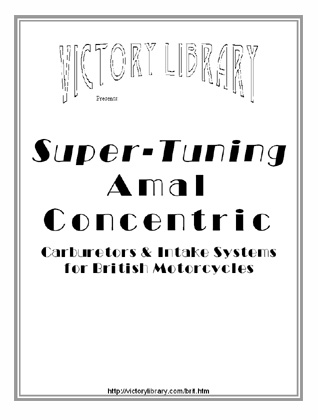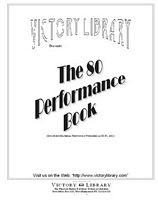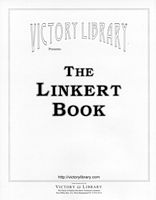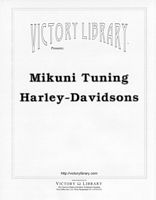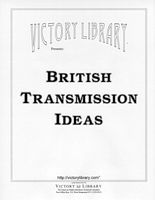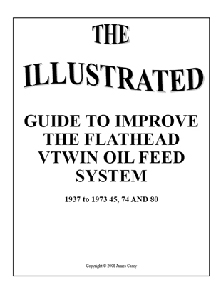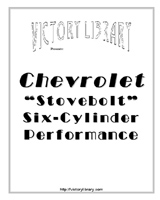|
|
 |
Purpose
Structural motor parts such as crankshafts and connecting rods are frequently described by their method of fabrication: billet, cast or forged. Much confusion, some of it intentional, surrounds the differences between these methods, and the their advantages and weaknesses. The following are some general observations offered to assist you in making your own choices. |
Comments by Bob Powers, click here to see his website: 
ďAll materials start out at some point as a cast chunk. There is a big difference though in a cast part and a billet chunk of steel or aluminum. I believe that the actual naming is that a square or rectangular chunk is called a billet, and a round chunk is called a round, but the name billet in aftermarket circles has come to mean “strong because it is made from a block of metal”. Not always true.
A cast part is made from material being forced or poured into a mold. The part will have thicker and thinner areas, and takes shape from this molten state. Therefore the material must have good castability . One of the main properties of a material that has good castability is that it does not form internal voids on cooling. As a material cools, it shrinks. If there are thick and thin areas, the thick areas will cool slower than the thin ones, and the thick areas can form voids, and the part can warp out of shape or crack, or worse, form internal stresses that come out when the part is used, then crack. That’s why when you look at an engine block for example, they often have scalloped out areas to make the wall thickness more even. These materials are typically more brittle. A cast crankshaft is “weaker” because it is made from cast or nodular cast iron, not because it is cast. It is cast because the material is very castable, but it is impossible to forge. A billet may be cast, but the shape is very very even and symetrical, so the above concerns do not come into play as in a cast part of some odd shape.
A forged part is made from a chunk of metal. It is then usually heated, and it is pounded into shape in a forging die. The extra metal oozes out from between the forging dies and must be ground off. This is why there is a large wide parting line on forged parts. A forged crank is stronger because of the steel it is made from. It could be an alloyed 4340 steel with .40% carbon, or a weaker 1020 steel that is not alloyed and has less (.20%) carbon. The early Chevy forged steel cranks crack so regularly mostly because of the weak material they were forged from. It was something like a 1020 (I’m not positive, but you get the idea). A forged piston is strong because of the material it is made from. It is forged because the material is not very castable. The forging process DOES add grain flow and add strength to the part as above, but it is primarily the higher material Ultimate Tensile Strength (UTS) and Yield Strength (YS) that make it strong. The yield point is the point at which a part first starts to plastically deform. Take a paper-clip, and straighten it. You can flex it to some degree without bending it. Once you permanently bend it, you have hit the yield point. The UTS is where the part actually breaks. The more brittle a material is, the closer together the UTS and the YS are. Also remember, steel can have a yield strength of as little as 40,000 psi to 300,00 psi (those numbers are off the top of my head and may not be exact). Now a forged part generally is more ductile than a cast part. 4340 steel is probably the most common material for rod and crank forgings. One of the reasons is its balance of high tensile strength and ductility. It also responds positively to heat treating, so the surface hardness and the overall material tensile strength can be increased after machining. It is cheaper to machine the part when soft, then heat treat it hard.
Now the cost of a forged part would seem to be higher because of needing a set of forging dies and a bajillion ton forging press, but the cost or a forged part is generally much lower than a billet part because once the forging tooling is set up, you just go to town and pump out thousands of parts. Forged parts are always made in high quantity to justify the cost of the tooling. The cost of tooling amortized over 250,000 parts is small. If you had a half million dollars tooling costs, in this case the per part cost would be $2. The parts are also close to finished shape, and do not need much machining. Machining generally must be done by workers with more skill and take more time than forging.
Now here is the key with billet parts... billet parts have the CAPABILITY of being of higher strength than a forged part. It depends on what kind of steel the part is made from. A billet part is cut from a solid chunk of steel, so the material does NOT have to be forgeable. You can make parts out of superior strength materials to forging, because you do not have to pick a material that is forgable. Again, this does not stop the designers from picking a weak cheap material, knowing gearheads will buy the parts because the box says “billet”. The biggest drawback to a billet part is they must be fully machined. If producing 100,000 or 250,000 parts, the cost of the machining of all the parts will be much higher than the cost of forging and then finish machining an equal number of parts. The advantage is in low numbers of parts. You can set up a CNC program to mill out 10 sets of billet rods and make money on them. The tooling cost to forge something I’m sure is over $100,000. I do not know what it would cost, but I am just throwing out a number.”
|
Not all billets are cast as the final step -some are rolled to make the shape before machining, and have more directional grain orientation (the grain follows the “squeezing” rollers somewhat) than cast (where the grain is formed based on the local cooling rate, which frequently follows section thickness and proximity to the mold wall). Of course, the CAD/CAM program may not take, or be capable of taking, advantage of the grain direction in the product manufacture. Billet can also produce shapes that are far better compromises of weight vs. stiffness than any forging. This “sculpturing” could also be done to a forging, but you lose the grain orientation and price advantages.
In sales terms, “billet” usually means “you don’t understand the term, so we’ll pretend it’s better, when actually it’s just cheaper for us to make”.
Billet also lacks a factor that is even present in castings: the “skin” effect, where the outermost molecular surface layer has some extra density and tensile strength (similar in effect to shot-peening, much less effective). This is why forged rods should be peened after polishing, to restore the compacted outer layer.
The bottom line is that each of these three methods has its advantages in price, strength or weight. Never assume that a particular product is best for your purpose based only on its method of construction. Examine all the details, and don’t spend money on something unless you’re satisfied that it’s the best solution to your problem.
Click here to see excellent comments on die casting by John Hamlin on his website:  |
|




